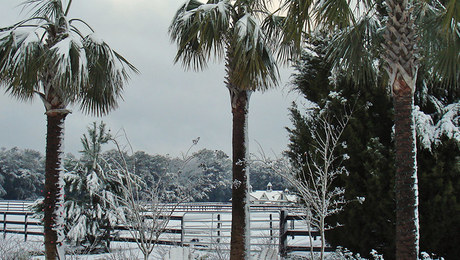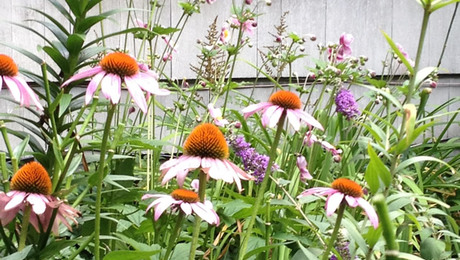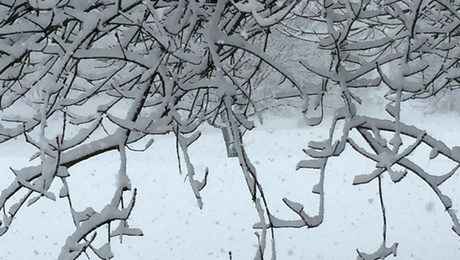
Photo/Illustration: Paul Zimmerman Roses

Photo/Illustration: Paul Zimmerman Roses
Here in the upstate of South Carolina they began forecasting “Snowmaggedon” last week. I didn’t realize it as I was on the American Rose Society (ARS) Cruise somewhere in the Caribbean. It was only a text from my wife that made me aware of it. Something along the lines of “enjoy the warm weather while you can because they are going be snow chores when you get back”.
I got in Monday, the day before the snow hit and we made sure we were ready. Food, extra hay for the horses, firewood and lots of warm clothes ready. To get my roses prepared for the cold blast of air and the snow I did – nothing.
That’s right – nothing.
You may remember a recent post where I talked about winter damage coming more from cold wind than cold temperatures. The cold wind pulls moisture out of the rose’s canes, much like it does on your bare skin and lips. Since we can’t coat our roses in “Chapstick”, it means we need something else to protect them against the cold winds when they come.
Ahhh, beautiful snow.
Snow is one of the greatest insulators around. When it covers plants, it acts as a first class insulating blanket. It shuts out all winds from the plants and since it’s moist, also offers some hydration.
The photo in this post is of my rose garden this morning. As you can see only the bottom of the plants are covered in snow. Most of what was covering all the plants melted off. However, just like mounding up mulch or soil to protect the base of the plant; snow offers the same protection. Now that the sun is out, the winds are picking up but there is still snow piled around the base of the plant. I may have some dieback on the top parts of the canes but I’m likely going to prune that off in a few weeks anyway.
At the same time the snow is piled up around the base of the plant, moisture is seeping into the ground. This hydrates the roots and the soil; also offering some added protection.
If you live well up north and the ground is frozen that is also okay. The frozen ground keeps the roses dormant and also acts as an insulator. Add a good layer of snow on top of that and the roots and base of the plant are well protected from wind and the coldest temperatures.
As a side note, the goal of protecting the base of the plant is exactly why you should bury the graft on budded roses 4-6 inches deep. It’s also why I prefer own-root roses because they tend to be better at coming back from die back because of a frost.
If your forecast calls for a dip in the temperatures for your rose’s sake be grateful if it also calls for snow. It’s the best protection around. And if your kids get a snow day off from school they’ll also be grateful, although I don’t know how you’ll feel about that!
Before I leave you, I’d like to add a few short notes on the American Rose Society Cruise. The ARS holds annual conventions and special events like this cruise. During the cruise there were talks by on several different rose subjects. I gave two of them and ARS President Jolene Adams gave one and Sandy Dixon the other. As with any rose gathering a big part of the event is the social aspect. It was great to spend time with old and new rose friends for the seven days we were on board. For more information on the ARS and ARS events please check out their website at www.ars.org.
Happy Roseing
Paul

















Comments
Thanks Paul, Yesterday we had 53 degree weather in SD. Spent several hours in our small yard doing clean up. Spread some compost on those areas. Heard the wind while sleeping and had a dream it snowed, I was glad since it protected the mulch on the plants from blowing away! Woke up this morning to just wind, haven't checked things out yet! Guess our gardening minds are busy at night too. We only have a few roses and they are still covered with the winter mulch. Thanks for the interesting article.
Log in or create an account to post a comment.
Sign up Log in